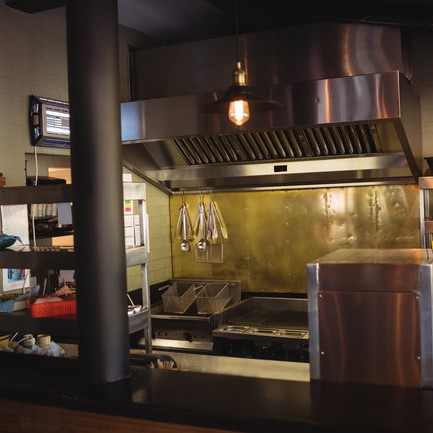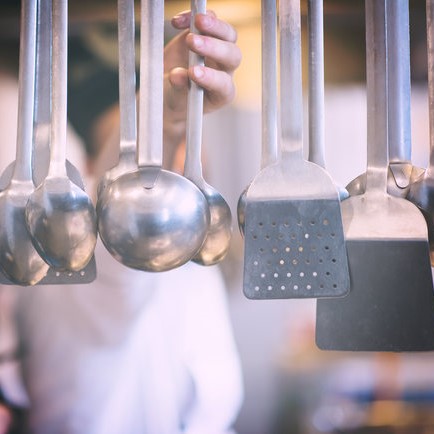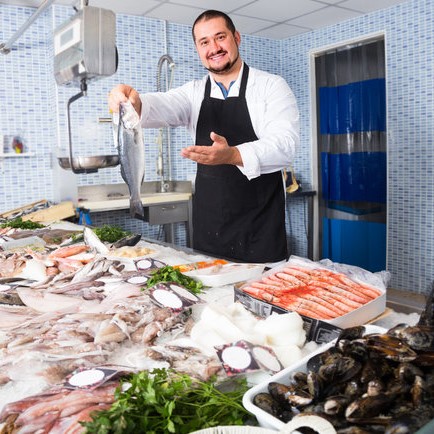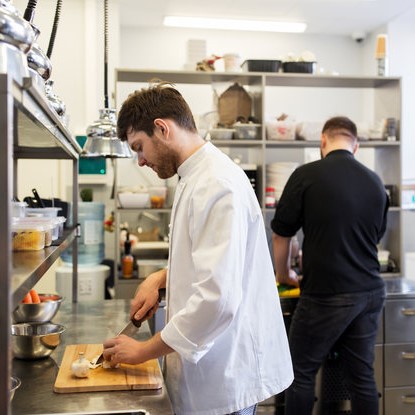Feb 23, 2020

The kitchen is an important area of any restaurant,
because the kitchen is at the heart of preparing the restaurant's menu items.
So, kitchen design is very important. That's because if the kitchen is designed without consideration to the work processes of the people working in it, that is, the entire chef team, impacts that entrepreneurs don't expect might happen.
Most SME restaurants often encounter this problem, and these are the 3 main loopholes that frequently occur during kitchen designs which lead to lots of problems, to the headache of your cooks. Read on to find out what they are and how to prepare and prevent them from happening to you.
Pick content to read in the article:
· Incorrect design or inappropriate layout for being a restaurant kitchen
· Packed with equipment that aren't worthwhile for use
· Unsystematic purchase orders, sometimes too little, sometimes too much, causing lost sales opportunities and cost overruns

1. Incorrect design or inappropriate layout for being a restaurant kitchen
Designing the layout of the kitchen is key to setting up the entire kitchen system. One frequently encountered problem is when the entrepreneur hires an unskilled kitchen layout designer or one who lacks prior experience in kitchen layout design, thinking the same ideas for ordinary kitchens might apply. However, this is a grave mistake.
Lots of entrepreneurs have to repeatedly spend a lot of money to redo their kitchens or undergo complete renovations. Even though they think they designed their kitchens well and the kitchens appeared attractive, problems are encountered during actual use. For example, work flow might be poor, so food output is slow, or chefs waste time having to grab things or change positions.
In addition, overly narrow space makes this inconvenient, while excessive space takes away from sales in front of the restaurant. These are the potential impacts of layout design without consideration to the work processes of each person working in each station in the kitchen and which might cause the restaurant to have to waste additional cost later on.

We can tell you right away that correcting problems later on is hard and costs more. If any entrepreneur is in the process of planning a restaurant kitchen, feel free to study how to design kitchens in an online course titled "Professional Kitchen Design" (Link: https://makrohorecaacademy.com/courses/kitchen-design/) by Chef Willment Leong in order to obtain understanding about the restaurant kitchen design process and have information on hand when holding discussions with the design team in order to prevent mistakes early on.

2. Packed with equipment that isn’t worth using.
Kitchen equipment is another issue sending many newbie entrepreneurs to bankruptcy. They might fully equip their kitchens and add whatever other people tell them to put there without considering whether or not the equipment they buy is suitable for the restaurants they are operating. They fail to consider whether or not the equipment has to be used or is either too large or too small. All of these things affect work and restaurant costs.
Thus, in purchasing kitchen equipment, a chef should also accompany you. Otherwise, you will run into the problem of buying things of the wrong sizes or things that can't be used conveniently, so you'd have to put them away and pay money to buy new things without appropriate cause.

3. Unsystematic purchase orders, sometimes too little, sometimes too much, causing lost sales opportunities and cost overruns.
This issue is also a mistake that frequently occurs in the kitchen section. Some restaurants have a manager responsible for ordering things, which is normal. However, whenever an ingredient purchase order is done without a build-to stock system. In other words, the purchase is done by estimation or by following the same patterns repetitively, you will run into problems.
A problem that will follow is this: Whenever sales are bad, you will have leftover ingredients in stock, becoming wasted or unprofitable costs. Otherwise, at any time in a week when sales are good, if ingredients are not ordered in reserve and then run out, you will lose sales opportunities.
Therefore, you should rely on the assistance of people like your chef when ordering ingredients to calculate build-to stock for the ingredients being ordered.

A good kitchen needs to have a suitable work environment such as for grabbing things, holding onto things, using equipment or ingredients, and seasoning foods without wasting time. The places where equipment are arranged have to be appropriate.
In order to save the energy of people working inside the kitchen and prevent rapid and excessive fatigue, water, electricity, gas, waste treatment, ventilation and inventory systems are all components that need to be considered.
The things discussed today must occur through thinking, design and construction processes based on understanding about restaurant kitchen work. Otherwise, it will be like when cooks don't use and users don't cook.
